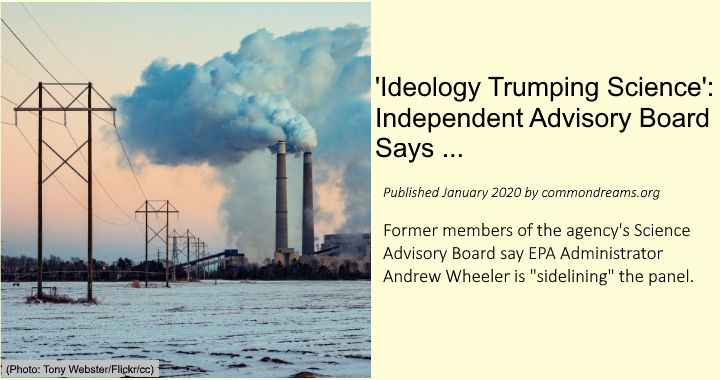In June 2017, I met someone from the US Environmental Protection Agency (EPA) at a conference. She seemed somewhat bemused at the changes that were starting to be made at her agency following Trump’s election. Political ructions had happened plenty of times during the six presidential tenures since the agency’s establishment by Richard Nixon in the 1970s. The BBC Radio 4 documetary, Discovery: Science Trumped, sets out how, during Trump’s presidential term, matters were of a completely different order. The career staffers line at that stage was ‘It probably won’t be as bad as we fear’. Unfortunately, this turned out to be wishful thinking.
The documentray reports that the first Head of the EPA in the Trump era, Scott Pruitt installed locks on the doors of the corridors around his office manned by a security guards so that he could not be approached by employees. Staffers said that his style was to avoid discussion and simply issue edicts. However, as noted by the New York Times in July 2018, the American environment can be thankful that he was ‘ethically challenged’ and left in disgrace. Unfortunately, his sucessor, Andrew Wheeler, was in a similar mould but without the personal weaknesses. Between them, these two achieved 78 deregulatory actions which is four times the rate under Bush. The hoped for bonfire of regulations had been achieved.
Industrial lobbyists have had a field day getting water pollution and toxic chemical regulations repealed. Indeed, the Department of Homeland Security was given the power to override any other law in the name of security, and to define for itself what constituted ‘security’. How depressing! For example, extensive and irreversible ecological damage has been caused in building sections of the border wall.
Needless to say, it’s now all change at the EPA and the time has come to put the bonfire out. I have been looking at the issue of water regulation worldwide. It is noticeable how different economies have been in lockstep reflecting pronouncements from the United Nations and World Health Organization. Before the 1970s, regulation of water was mainly about rights, with some early examples, such as in France, of attempts to control excessive pollution. Between 1970 and 2000 there was a major push to protect water sources from pollution due to the knock-on effect on water supply, with the US, UK and Germany following France’s lead. Other countries gradually followed, and eventually European legislation was enacted in the form of the Urban Wastewater Treatment Directive in 1991.
Since 2000, the watchwords have been sustainability and climate change, and these regulations mark a major change of emphasis. Remarkably though, water reuse regulation is still hardly present despite having an incredibly influential role in sustainability. Water reuse supply is potentially plentiful, the energy cost is modest, the water is close to where it’s needed in population centres, and you get the chance to control quality. In reuse, the US EPA is behind the curve and so far has only mustered guidelines. However, individual States, most notably California, are world leading, and have joined together with far-sighted countries such as Singapore and Australia to make reuse a reality.
In Europe, the EU is just about to finally launch its reuse regulation covering minimum requirements for different purposes. This promises to herald a major rethink on alternative water sources and will have far reaching consequences for both water security and climate change. Needless to say, modern regulations are mainly about environmental protection. However, for some, regulations are irksome and costly. For others they create opportunity since drivers are provided for the direction of travel of society; wherever there is a problem, a solution soon follows, and costs can turn into opportunities.


Graeme—-yours is an excellent review and recap of a complex water management and political cross roads.
Thank God that Trump and his tribe are out and the USA has an advocate for science, water and the environment!!
Cheers my friend.